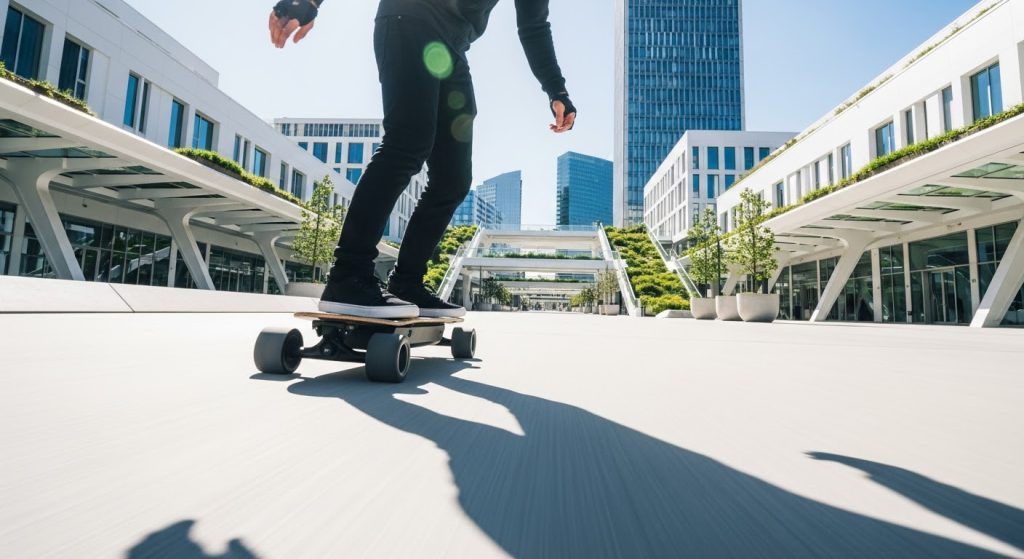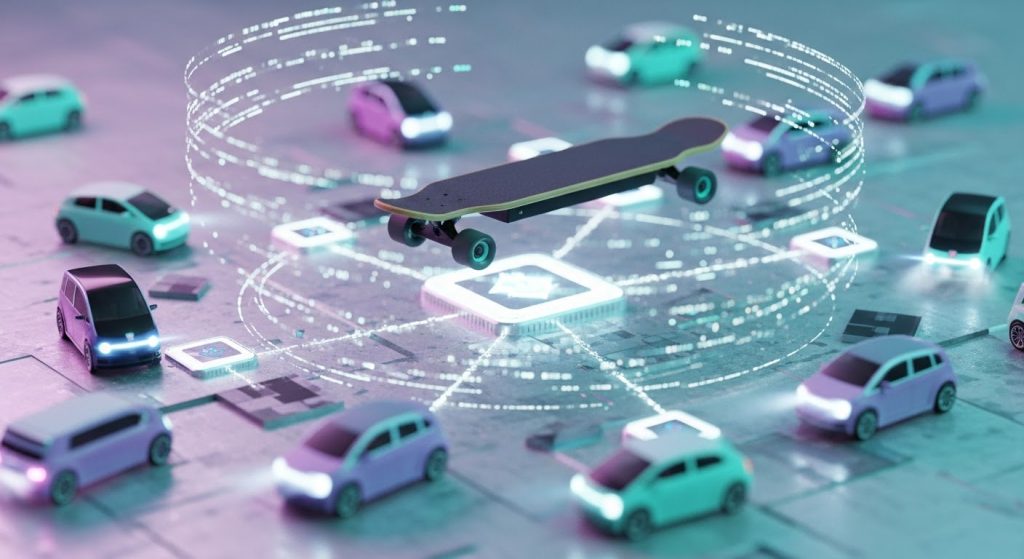Imagine waking up, grabbing your backpack, and gliding smoothly through your city streets instead of sitting in bumper-to-bumper traffic. No fumes, no honking, no stress, just a quiet, breezy ride powered by electricity. It might sound futuristic, but this reality is already taking shape.
Electric skateboards are becoming one of the most exciting symbols of modern urban mobility, and they might just lead the way in how we move around cities by 2035.
In this article, we explore how electric skateboards are changing the way we think about commuting, how they fit into the growing idea of smart cities, and why they could be the next big thing in sustainable transportation.
The Urban Commute Revolutionized
The Problem of Urban Congestion
Cities around the world are becoming overcrowded. As more people move into urban centers, traffic congestion and pollution continue to rise. Traditional transportation, like cars and buses, is no longer ideal for short daily trips. Commuters are now searching for faster, cleaner, and more flexible ways to move around.
The Rise of Personal Electric Vehicles
Personal electric vehicles (PEVs) such as scooters, bikes, and skateboards have become popular options. Among them, electric skateboards are especially appealing because of their:
- Compact design for easy carrying
- Ability to bypass traffic and narrow streets
- Zero emissions and quiet performance
They are light, portable, and eco-friendly, making them perfect for city life.
Electric Skateboards: More Than Just a Toy

From Hobby to Everyday Transport
Once viewed as toys for teenagers, skateboards have evolved into serious transport tools. Thanks to new technology, electric skateboards now offer better stability, longer range, and improved safety features. Modern boards can climb hills, travel faster, and even connect to smartphones through apps that track speed and battery life.
Everyday Use and Benefits
Many people now use electric skateboards for:
- Short-distance commuting
- Quick errands or casual rides
- The “last mile” from a train or bus station to work
They are practical, time-saving, and cost-effective. With the right gear and awareness, riding can also be safe and enjoyable.
Safety and Innovation
Manufacturers are constantly improving safety. Wider decks, brighter lights, and stronger braking systems make today’s boards far more reliable. Combined with helmets and protective gear, electric skateboards are becoming a secure way to move through busy city streets.
Smart Cities and Micro-Mobility Integration

Smart Cities Embrace Micro-Mobility
Modern cities are being redesigned for sustainability and accessibility. Electric skateboards play a key role in this transformation. Urban planners are adding features like:
- Dedicated micro-mobility lanes
- Public charging stations
- Secure parking zones for small electric vehicles
These efforts make it easier for people to travel short distances without relying on cars.
The 15-Minute City Concept
A growing urban planning idea is the “15-minute city,” where daily needs, work, shopping, and leisure are within a 15-minute walk or ride. Electric skateboards fit this model perfectly by offering quick, quiet, and flexible mobility between neighborhoods.
Examples from Around the World
Cities such as Paris, San Francisco, and Seoul are already integrating micro-mobility options. Dedicated lanes, sharing programs, and charging hubs are showing how electric skateboards can fit naturally into everyday urban life.
The Policy and Infrastructure Puzzle
The Need for Clear Rules
Electric skateboards are still new to many cities, and laws about where and how they can be used vary. Some cities allow them in bike lanes, while others restrict them. Clear, consistent regulations are essential to ensure safety and promote adoption.
Key Policy Considerations
Governments and city planners need to establish:
- Speed limits for safety
- Helmet and gear requirements
- Designated riding zones
Data-Driven Urban Planning
Electric skateboards can also help cities gather valuable data. Tracking routes and usage patterns helps planners improve infrastructure, reduce congestion, and make smarter transport decisions.
Collaboration for the Future
Partnerships between public authorities and private companies can accelerate growth. Together, they can develop charging networks, educate riders, and promote safe, sustainable urban mobility.
Future Outlook: Seamless Urban Navigation

A Connected Mobility Network
The future of smart transportation will combine various modes into one seamless system. You might ride an electric skateboard to a bus stop, dock it securely, and continue your journey by train, all within the same connected network.
Next-Generation Innovations
In the coming years, we could see electric skateboards that:
- Automatically adjust speed for safety
- Connect with city traffic systems
- Offer self-balancing or autonomous features
By 2035, electric skateboards could be a common sight in every major city, helping reduce traffic, cut emissions, and create cleaner urban environments.
Also Read: The Environmental Benefits of Electric Skateboards: A Green Commuting Alternative
Final Thoughts
The future of city mobility depends on how individuals, companies, and governments work together. Choosing smarter ways to travel, like electric skateboards, can help reduce pollution and traffic while making cities more livable.
Electric skateboards represent freedom, efficiency, and sustainability. They are more than just a trend; they are a step toward a cleaner, more connected future.
If cities continue to invest in smart infrastructure and safety education, electric skateboards could become an everyday tool for millions of people. The journey toward sustainable transportation starts with small, smart choices, and electric skateboards may just be the ride that leads the way.
Frequently Asked Questions (FAQs)
1. Are electric skateboards legal to ride in cities?
Laws vary depending on the city and country. Some places allow electric skateboards on bike lanes or sidewalks, while others limit them to private areas. Always check your local traffic laws before riding.
2. How far can an electric skateboard travel on a single charge?
Most modern electric skateboards can travel between 15 to 30 kilometers on one charge, depending on battery size, speed, and terrain. High-end models can go even further.
3. Are electric skateboards safe for commuting?
Yes, when used responsibly. Riders should always wear helmets and protective gear, follow traffic rules, and use boards with reliable brakes and lights for better visibility.
Read: Top 5 Mistakes New Electric Skateboarders Make and How to Avoid Them
4. How much maintenance does an electric skateboard need?
Maintenance is minimal. Regularly check the battery, wheels, and bolts, and keep the board clean and dry. Avoid riding through deep water or rough surfaces to extend its lifespan.
5. Can electric skateboards help reduce traffic congestion?
Absolutely. By replacing short car trips with compact, zero-emission travel, electric skateboards can significantly reduce congestion and pollution in crowded urban areas.
6. Are electric skateboards suitable for beginners?
Yes. Many models are designed for beginners, offering lower speed modes and better balance. With a bit of practice, most riders quickly gain confidence and control.




